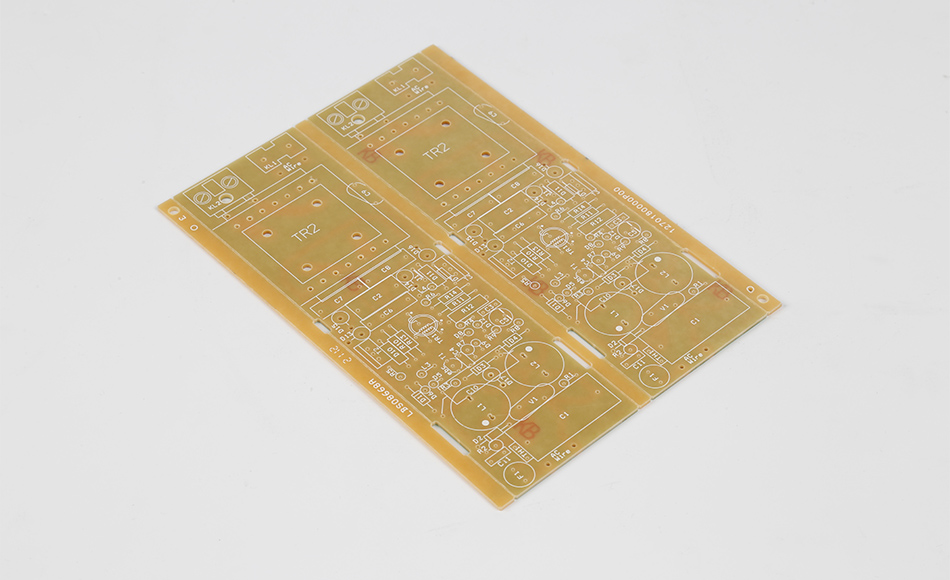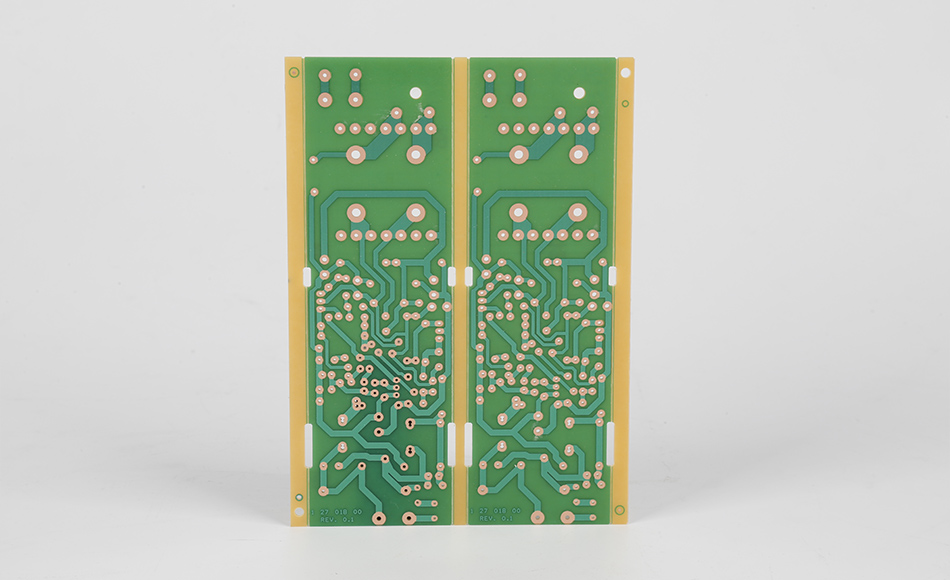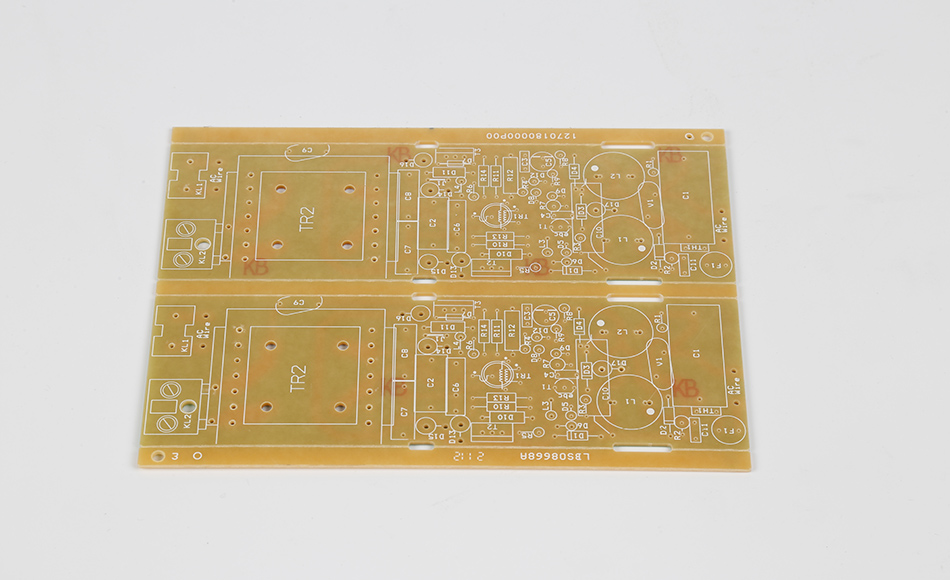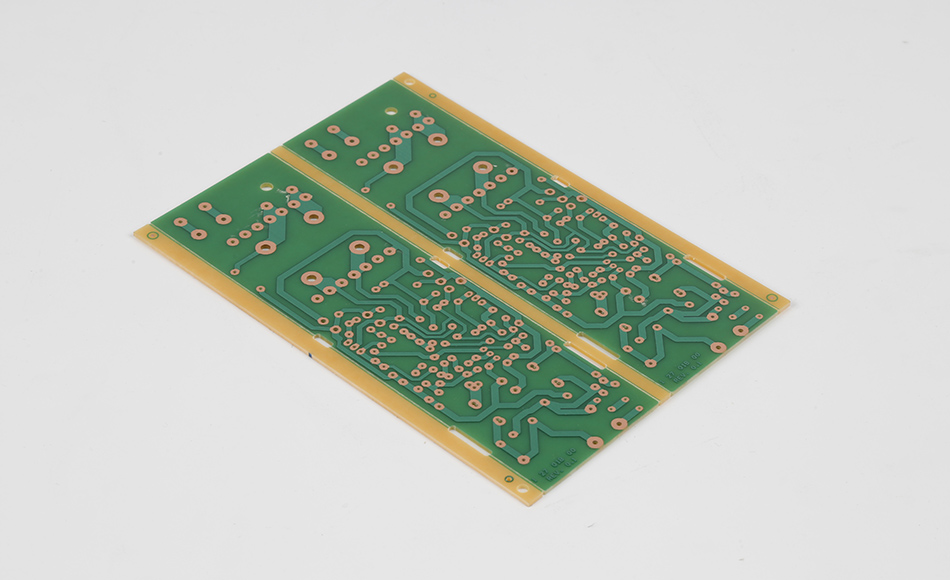-
- PCB TYPE
- PRINTED CIRCUIT BOARD PROTOTYPE ALUMINUM PRINTED CIRCUIT BOARD R&F PCB FPC HIGH FREQUENCY PCB HIGH-TG PCB HEAVY COPPER PCB HDI PCB PCB FOR LIGHTING METAL CORE PCB
time:Aug 22. 2025, 14:33:21
low CTE CEM3 has become an indispensable material in the era of miniaturized electronics, where shrinking form factors and increasing power densities amplify the risks of thermal stress. As devices evolve to pack more functionality into smaller spaces—from wearable health monitors to compact industrial sensors—traditional substrates struggle to manage the thermal expansion mismatches that threaten reliability. low CTE CEM3 addresses this by minimizing dimensional changes across temperature fluctuations, acting as a stabilizing foundation for components that operate in tight proximity. Unlike standard CEM3, which can introduce stress through expansion, low CTE variants are engineered to align with the thermal behavior of adjacent materials, from copper traces to semiconductor chips. This article examines how low CTE CEM3 enables the next generation of miniaturized devices, its role in preventing thermal-induced failures, innovative testing approaches to validate its performance, and its integration with cutting-edge component technologies.
Miniaturization pushes electronics to their physical limits, with components often spaced mere micrometers apart. In this context, even slight thermal expansion can have cascading effects:
In high-density PCBs—where components like microcontrollers and capacitors are placed less than 0.2mm apart—thermal expansion of the substrate can cause leads or solder joints to touch adjacent components, creating short circuits. low CTE CEM3’s minimal expansion keeps these components within their designed positions, maintaining safe distances even as temperatures rise. This is particularly critical in wearable devices, where PCB real estate is extremely limited and failures can compromise user safety.
Modern electronics increasingly use fine-pitch components (e.g., 0.3mm pitch ball grid arrays, BGAs), where hundreds of tiny solder balls connect the component to the PCB. Thermal expansion mismatches can cause these solder balls to crack or detach, disrupting electrical continuity. low CTE CEM3’s ability to match the CTE of these components—typically made from ceramics or silicon—distributes stress evenly across all connections, reducing the risk of individual solder ball failure. In IoT sensors, which rely on BGAs for processing power, this ensures consistent data transmission.
3D packaging—stacking chips vertically to save space—creates new thermal challenges, as heat from multiple layers exacerbates expansion. low CTE CEM3 serves as a interposer or substrate in these structures, providing a stable platform that prevents warping between layers. This stability is essential for 3D-stacked memory modules in smartphones, where data transfer speeds depend on precise alignment between stacked chips.

The development of low CTE CEM3 involves a holistic approach to material science, optimizing every layer and component to resist expansion:
low CTE CEM3 uses a blend of high-performance fibers to create a thermally stable framework:
Silica Fibers: With a near-zero CTE, silica fibers act as rigid anchors within the substrate, limiting overall expansion. These fibers are woven into the outer layers to provide directional stability, particularly in the X and Y axes where components mount.
Carbon Fibers: In specialized variants, carbon fibers—known for their low CTE and high strength—are incorporated into the non-woven core. Their addition reduces the material’s overall CTE while enhancing mechanical rigidity, making them suitable for applications like drone navigation systems that experience both thermal stress and physical vibration.
The fibers are oriented using computer-controlled layering systems to create a balanced structure, ensuring the substrate resists expansion equally in all directions. This isotropy is critical in miniaturized designs, where components are placed across the entire PCB surface.
The epoxy resin in low CTE CEM3 is reformulated to minimize expansion through:
Nanocomposite Additives: Nano-sized particles of materials like titanium dioxide (TiO₂) or silicon carbide (SiC) are dispersed in the resin. These nanoparticles fill gaps between larger fillers, creating a more compact matrix that resists expansion. Their small size also ensures uniform distribution, preventing localized hot spots of high expansion.
Thermosetting Modifiers: Additives that enhance cross-linking density during curing create a more rigid resin structure. This molecular rigidity reduces the resin’s ability to expand when heated, complementing the stabilizing effect of the fibers.
To ensure fibers and resin expand as a single unit, low CTE CEM3 uses reactive coupling agents. These agents form covalent bonds between the fiber surfaces and resin molecules, eliminating the micro-gaps that cause differential expansion in standard CEM3. This cohesive behavior is critical in flexing applications, such as foldable phone hinges, where the substrate must bend without internal separation.

Ensuring low CTE CEM3 meets the demands of miniaturized electronics requires advanced testing beyond traditional CTE measurements:
Infrared (IR) microscopes with sub-micrometer resolution are used to map temperature-induced dimensional changes across the PCB surface. This technique identifies localized expansion “hot spots” that could compromise fine-pitch components, even if the overall CTE meets specifications. For example, in a PCB with a 0.1mm pitch BGA, micro-scale mapping can detect 1μm expansions that would otherwise go unnoticed but could cause solder ball failure.
low CTE CEM3 is subjected to extreme temperature cycles—often from -65°C to 150°C—repeated thousands of times. This accelerated aging test simulates the lifetime thermal stress a device might experience, measuring how well the substrate maintains its dimensions and component bonds. Post-test analysis using scanning electron microscopy (SEM) checks for solder joint fatigue or fiber-resin delamination, ensuring the material’s stability over time.
DMA measures how low CTE CEM3’s mechanical properties change with temperature, focusing on modulus (stiffness) and damping. A stable modulus across the operating temperature range indicates the material resists softening, which would increase expansion. This is particularly important in high-power miniaturized devices, where operational heat can soften resins in standard substrates.

low CTE CEM3 enables the integration of cutting-edge components that demand thermal stability:
Components like gallium nitride (GaN) and silicon carbide (SiC) semiconductors—used in high-efficiency power systems—operate at high temperatures and have low CTEs. low CTE CEM3’s thermal behavior matches these materials, preventing stress that would otherwise crack solder joints or warp the die. In miniaturized electric vehicle (EV) chargers, this integration allows GaN-based systems to operate reliably in tight spaces.
MEMS devices—such as accelerometers in smartwatches—rely on precise mechanical alignment. Thermal expansion of the substrate can disrupt this alignment, degrading sensor accuracy. low CTE CEM3 provides a stable base, ensuring MEMS components maintain their calibration across temperature changes. This is critical in medical MEMS devices, like insulin pump sensors, where measurement precision directly impacts patient health.
HDIs with microvias (diameters <0.1mm) enable dense routing in miniaturized PCBs. low CTE CEM3 prevents via barrel cracking caused by thermal expansion, ensuring reliable electrical connections between layers. In 5G mmWave modules, where HDIs are essential for signal routing, this reliability ensures consistent high-frequency performance.

low CTE CEM3 offers unique benefits compared to other low-CTE substrates in small-form-factor devices:
Standard CEM3’s higher expansion makes it unsuitable for fine-pitch components, with failure rates in 0.3mm pitch BGAs exceeding 20% after thermal cycling. low CTE CEM3 reduces this failure rate to less than 2%, making it viable for miniaturized designs.
While low-CTE FR4 offers similar stability, it is denser and stiffer, making it harder to shape into the thin, flexible forms required for wearables. low CTE CEM3’s balance of flexibility and stability makes it ideal for curved or foldable devices.
Ceramics have ultra-low CTEs but are brittle and difficult to machine into complex shapes. In miniaturized devices with intricate layouts—such as hearing aids—low CTE CEM3’s machinability and toughness provide a practical alternative.

Advancements in low CTE CEM3 are focused on meeting the even more stringent demands of next-generation miniaturized electronics:
Researchers are mimicking natural structures like bamboo—with its fiber-reinforced, low-expansion design—to create low CTE CEM3 variants. These bio-inspired structures use graded fiber densities, with higher concentrations in areas prone to stress, optimizing stability where it’s most needed.
Incorporating microcapsules of healing agents into the resin allows low CTE CEM3 to repair small cracks caused by extreme thermal stress. When a crack forms, the capsules rupture, releasing a polymer that fills the gap and restores structural integrity. This could extend the lifespan of implantable medical devices, where replacement is invasive.
Integrating tiny strain sensors into low CTE CEM3 allows real-time monitoring of thermal expansion in operational devices. This data can trigger cooling systems or adjust power levels to prevent excessive stress, enhancing reliability in critical applications like aerospace sensors.
low CTE CEM3 is a foundational material for the future of miniaturized electronics, enabling the packed, high-performance designs that define modern technology. By minimizing thermal expansion and aligning with the behavior of advanced components, it prevents the stress-induced failures that would otherwise limit device shrinkage. Its unique combination of stability, flexibility, and manufacturability makes it superior to alternatives in small-form-factor applications, from wearables to 3D-packaged systems. As electronics continue to shrink and demand more from their substrates, low CTE CEM3 will remain at the forefront, ensuring reliability without compromising innovation. For engineers and designers, it represents not just a material choice, but a enabler of the next wave of electronic advancement.

Got project ready to assembly? Contact us: info@apollopcb.com



We're not around but we still want to hear from you! Leave us a note:

Leave Message to APOLLOPCB
